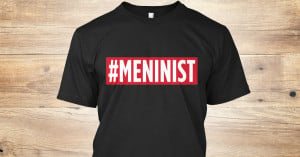I’ll be honest: I do yoga every single day.
I mean, sure, there are days when I’m too tired or sick to practice (or just don’t feel like it), so I don’t technically do yoga every single day, but generally speaking, I show up at the studio Sunday through Saturday, with a nice mix of active, yong styles and passive, yin styles, to better my daily life.
And yet, most people don’t know that about me. Most people don’t know that yoga is largely responsible for forever changing my relationship with my body (and my anxiety, to boot). If you’re not someone who talks to me regularly, you’d never know that it’s a practice to which I am entirely dedicated.
Partly, that’s because my relationship with yoga feels personal — like it’s the one thing that’s mine and mine alone.
Partly, it’s because I have a complicated relationship with being a white person practicing an ancient Indian tradition. And partly, it’s because I’m a body acceptance and eating disorder recovery activist, and anything fitness-related can be triggering for a lot of my social media pals.
Yoga, for me, was a savior — and yoga, of course, is more than just the physical asana practice and its physiological benefits.
But I recognize that for some folks, the celebration of it could be a reminder of a deeply dark period of their lives or a twisted affirmation of their ongoing self-destructive behaviors.
And that’s why you won’t ever see images of me practicing crow pose on Instagram (um, and also because, let’s be real, I can’t do crow pose). Hashtag bakasana.
But as I scroll through social media (and sometimes, rarely, talk to people IRL), I notice that a lot of people aren’t taking these same precautions.
And of course you’re not.
You’re allowed to practice fitness in whatever way feels good to you, and you can share about it online if you want to. It’s your Instagram account, after all.
But if you’re a social justice advocate, you’re put in a weird position when you want to defend that right, even when the people who follow your Instagram are saying that they feel triggered or shamed by it.
I imagine it feels really frustrating to have someone tell you that your self-care is potentially hurting them. And I’m sure it’s also really frustrating not to know how to navigate that, as someone who simultaneously wants to keep the world a safer place and as someone who just wants to post about their new 10K record in peace.
But I think that there is, indeed, a balance to strike here.
So how can we take up sharing about our fitness lives in ways that are less likely to be harmful to people whose relationship with their bodies and fitness are precarious?
Let’s explore this together.
1. Recognize That You’re Not Inherently Doing Something Wrong
Moving our bodies in ways that feel healing to us is an absolutely beautiful thing. And in a world that forces diet culture down our throats constantly, it’s near miraculous that some of us are able to find ways to exercise out of self-love and not fat-shaming self-hate.
When we find an activity that nourishes our bodies and spirits, of course we want to share that experience with the world.
It’s the 21st century, after all, and isn’t it our duty to Snapchat the shit out of things that make us happy, showing the world how and what we’re doing? Extending that social norm to your fitness life only makes sense.
And you’re not a bad person for doing it. Hell, you aren’t even a bad activist for doing it.
As such, I’m not writing this article to tell you why you shouldn’t post about your second shift at the gym or to chastise you for not prioritizing the needs of folks with body image struggles or complicated relationships with exercise.
I’m writing this article because people have asked me, “How do I balance sharing about this important aspect of my life while causing the least amount of harm possible?”
And that’s a really, really good question.
So if you’re looking for ways to do so more conscientiously, I’ve got some thoughts for you.
2. Realize That for Some People, It Will Always Be Triggering
If someone is triggered by brunettes, there’s not much I can do about that, outside of dyeing my hair regularly. And since I don’t think the made-up person in question is going to foot that bill, and since I can’t shout “Content Warning: Brown Hair!” whenever I walk into a room, there isn’t much I can do about that except be understanding.
And while that seems like a ridiculous comparison, let’s remember that people can be triggered by a-ny-thing. People can be triggered by spoons. People can be triggered by the color blue. People can be triggered by Taylor Swift (as someone who follows my Tumblr is — and, thankfully, told me).
Because a trigger is, simply, something that throws us back into a traumatic event or period of our lives.
As such, for some people, discussions about or images of fitness will always be harmful, no matter what language you couch it in.
So when folks let you know that your online content is triggering them, don’t take it as a personal affront to your activist livelihood or as an attack on how you’re contextualizing your workout.
At the same time, don’t defend yourself by telling them that they’re wrong or that you’re entitled to post about whatever you want to. It’s not always fair to throw someone a casual “GTFO then!” when they tell us that we’ve hurt them; we have to at least pay attention to their reasoning.
Because while, of course, you’re allowed to post whatever you want on your own page, we still have to be responsible for how that affects other people.
Instead, recognize that this is about them — not about you — and that all you’re obligated to respond with is “I apologize for that. I hope that you’re taking self-care to regain a sense of safety.”
And if you want to go a step further (I hope you do!), then you can try to minimize the hurt in the future.
3. Use More Intentional Language When Discussing Fitness
Language is a funny thing — and a fascinating one at that. And one of the ways that this is true is in looking at sociolinguistics.
Sociolinguistics, essentially, is the study of how descriptive language affects society, and how society affects our use of language. It seeks to understand the connections between how we talk about something and how we think about that same thing.
And in the case of food and fitness, we have some really fucked up ways of talking and thinking — and they definitely tie together.
We’ve been raised in a society to think about food and fitness as moral issues, because we’re been raised in a society to believe that our bodies, in and of themselves, are moral issues (see point #10 in this article). As such, we often apply a bootstrap mentality to the ways in which we discuss food and fitness.
That is, we think of fitness as something that people who work hard do — and we degrade those who don’t do it — most often because of how fat-shaming ties into this.
And even if you don’t actively state that you’re a “better” person for working out or that those who don’t are “worse” people, the ways that we talk about food and fitness absolutely do imply that dichotomy.
For example, we use words like “good” and “bad” to describe our inputs and outputs of calories: “I was bad today and skipped the gym” or “I was good today and ate a salad.” We use language like “If I can do it, anyone can” to make a point about hard work and determination – attributes that are considered valuable, especially in a capitalist-driven society. And we employ various “fitspiration” narratives (which are always harmful) that place value on strength, power, and a narrow definition of health.
And even if you mean these in helpful, inspirational, or motivational ways (even if only directed at yourself), you’re still using the same language that diet culture uses to make people feel ashamed of their bodies.
And that language actively harms people.
So my number one tip for making your posts more body image friendly (and less pandering to the diet culture machine) would be to be careful about moralizing your fitness routine.
4. If Possible, Offer a Way to Filter Posts
I know that at first glance, this may seem like a bit of unfair frontloading work for you to put in just because a handful of people don’t like your fitness posts.
But if you really do want to try to create an environment where people can more readily navigate the fitness world that you’re inadvertently creating on their timeline, one awesome way to do that would be to filter your posts.
For example, with my aforementioned Tumblr follower who is reminded of her abusive ex-partner when she sees or hears Taylor Swift, I simply asked her what kind of a tag I could throw on those posts so that Tumblr would filter them out for her. Hashtag Taylor Swift. Easy enough.
Similarly, you can use hashtags on Twitter when you talk about your fitness life, and let your followers know which hashtag you’ll be using. That way, they can actively tell Twitter not to show them those posts. Magically, those tweets will be erased from their feeds.
And even though Facebook doesn’t have quite as easy an opt-out option, you can still make it happen: You can create lists of which friends you purposely share (or don’t share) information with.
I have a “Family” list, for instance, that I often block from viewing posts that would cause too much familial drama. If you know the folks who are triggered by your fitness posts (or if you want to flat-out ask), then you could create a list like this!
With this easy opt-out option, you can talk about your time at the gym freely, and your friends can avoid any pain that may come along with that for them. Win/win.
Or you can offer a simple content warning.
Adding “CW: Fitness” or “CW: Body Picture” to the start of a post doesn’t add that much more work for you, and it can do a lot of good for folks who want to avoid knowing about your protein shake or seeing how many abs we can count on you now. It gives folks the option to engage.
And if you’re really, really, really into your sport or activity, you can also potentially create an account especially for that. That way, there’s a place where you can post that stuff where you know that everyone following you is doing so with the understanding that that’s what will be popping up in their feeds.
No surprises here, folks. Just mean, green smoothies and videos of P90X routines.
These options allow for more choice in what kind of content people get from you. After all, they might be following you for your kick-ass commentary about rape culture — not for pictures of you flexing in the mirror. And this is helpful for folks who don’t want to stop following you because of the latter and miss out on the former.
5. Never Use Numbers — Never, Ever Use Numbers
At this point, you might be like, “Fuck you, Melissa, all of that is too much work.” Okay. First of all, take a deep breath and let go of your anger; second of all, I have another option for you, then.
If adding to your fitness posts is too much to ask, then what about subtracting?
Because when it comes to eating disorder recovery, healthy body image restoration, and/or recuperating from a lifetime of fatphobia, numbers are rarely helpful for anyone.
No one really needs to know by how many minutes you beat your personal best. Or how many pounds you managed to lift today. Or how much time you spent in your fitness class.
That information is more or less unnecessary. It’s really only useful to you — which means that maybe it belongs in your progress journal and not on your Facebook page.
And just like it’s common sense that folks with body image issues, for instance, don’t want to see numbers detailing calories or weights, generally speaking, numbers of any kind related to fitness can be triggering or can feel shaming — even if you don’t mean them to be (which I know you don’t).
So the option to just remove them is there for you. No harm done.
Because your status is still going to read the same if you just say “I beat my personal best today” or “I took on more weights today” without the numbers.
You’re still communicating to your followers that you’re proud of yourself, and you’re still recording your progress — just without the part that can do more harm than good for some folks.
***
At the end of the day, people want to be consenting to what pops up on their feed— and just because something makes you happy doesn’t mean that it can’t be potentially harmful to others.
While you can’t always control what may or may not hurt another person, hearing out feedback from folks and trying to work it into your social media sharing can be a really powerful way to show up in community for others.
And if you don’t want to try any of these ideas, that’s okay, too. Just also be cool with the fact that some folks might need to unfollow or mute you for their own self-care.
I know that I’ve done it — muted folks on Twitter or completely unfollowed them on Instagram — regardless of if we’d been friends for a decade or if it’s my family. Because I don’t want to see that shit.
And, with the click of a button, I don’t have to.
But if, with just as much ease, you can make your posts more accessible and less potentially harmful to folks, why wouldn’t you?
[do_widget id=’text-101′]
Melissa A. Fabello, Co-Managing Editor of Everyday Feminism, is a body acceptance activist and sexuality scholar living in Philadelphia. She enjoys rainy days, tattoos, yin yoga, and Jurassic Park. She holds a B.S. in English Education from Boston University and an M.Ed. in Human Sexuality from Widener University. She is currently working on her PhD. She can be reached on Twitter @fyeahmfabello.
Search our 3000+ articles!
Read our articles about:
Our online racial justice training
Used by hundreds of universities, non-profits, and businesses.
Click to learn more





















